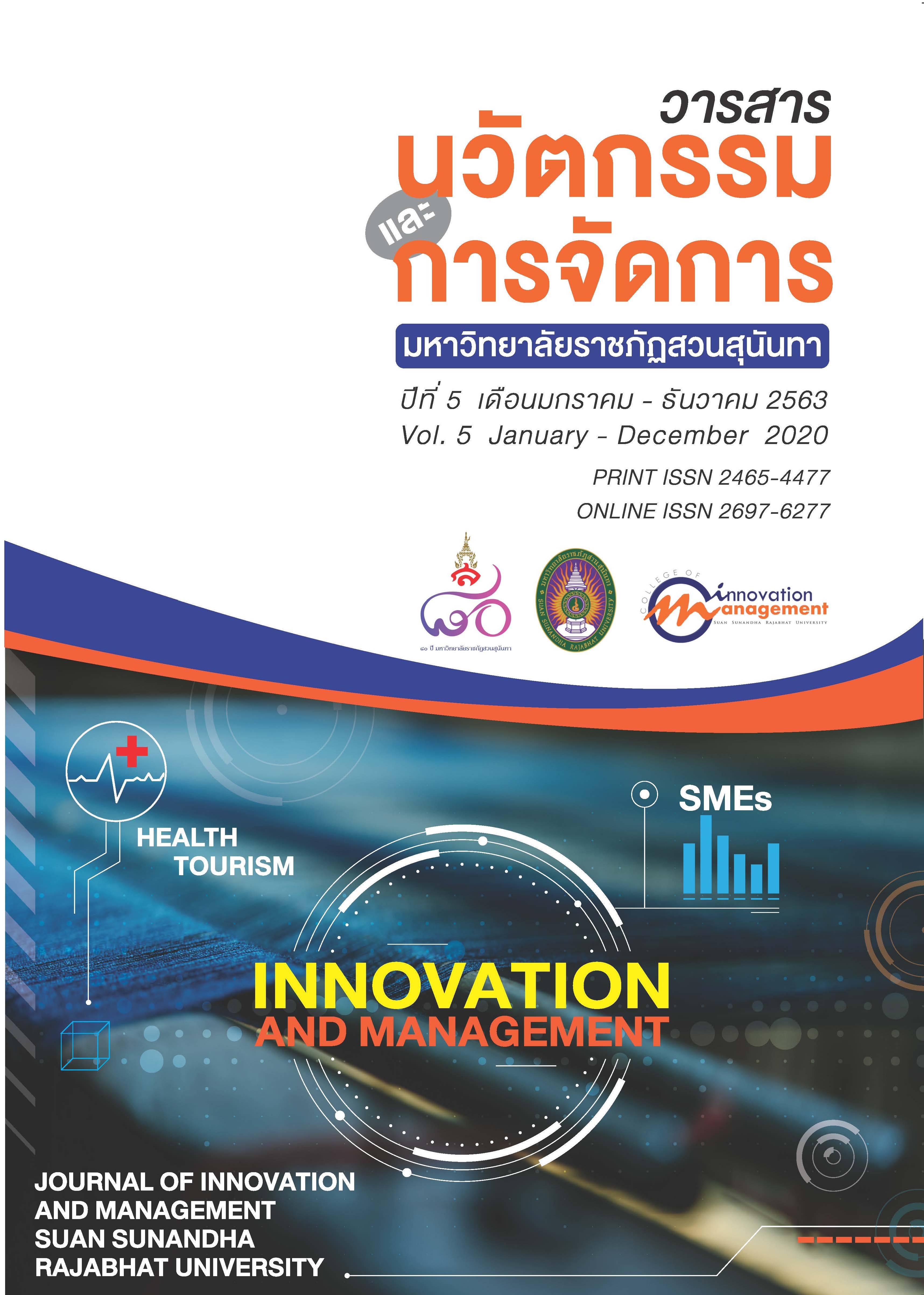Factors Influencing the Acceptance of the Innovative Prototype for the Residence Construction Management
Keywords:
technology acceptance, innovative prototype, management, residence constructionAbstract
The two objectives of this study were (1) to investigate the demographic characteristics that influence the acceptance of the innovative prototype for the residence construction management, and (2) study the technological factors that influence the acceptance of the innovative prototype for the residence construction management. The research design is defined as quantitative. The samples of the study are selected by the stratified sampling, comprised of 317 Bangkok-resident contractors. A set of questionnaires is used as an instrument. The data analysis was used descriptive statistics of frequency, percentage, average, and standard deviation and the inferential statistics of ANOVA and multiple regression analysis. The Research Findings revealed that (1) The demographic characteristics that influence the acceptance of the innovative prototype for the residence construction management include gender, age, education, marital status, and accountable area. The participating contractors with different educational backgrounds show a different degree to accept the innovative prototype for the residence construction management, which is at a level of .05. For the other participants, the difference is not found, and (2) The factors influencing the acceptance of the innovative prototype for the residence construction management could have approximately 62.6% of prediction accuracy. As testing each independent and dependent variable singly, it is found that the behavioral intention to use, attitude toward using and perceived usefulness influence the acceptance of the innovative prototype for the residence construction management, significantly at a statistical level of .05 as the equation = .255 +.482 (X4) + .314 (X3) +.127 (X2)
References
Alvin, T. (1980). The Third Wave. New York: William Marrow.
Boonying, J. (2016). Construction work management at Maptaphut industrial estate. [Online]. Retrieved June 11, 2020 from: https://so05.tci-thaijo.org (in Thai)
Business Services Division. (1983). Department of Business Development. [Online]. Retrieved May 5, 2020 from: https://dbd.go.th/index.htm
Chaweesuk, S. & Vongjaturapat, S. (2016). Theory of the acceptance of information technology adoption. [Online]. Retrieved May 23, 2020 from: http://www.it.kmitl.ac.th (in Thai)
Davis, F.D. (1993). Perceived usefulness, perceived ease of use, and user acceptance of information technologies. MIS Quarterly, 13(3), 319-340
Drucker, P.F. (1985). The Discipline of Innovation. Harvard Business Review, 68(4), 67-72.
Fishbein, M. and Ajzen, I. (1975). Belief, attitude, intention, and behavior: an introduction to theory and research. MA: Addison-wesley.
Hughes, C. (2003). What does it really take to get into the Ivy League & other selective colleges? New York: McGraw-hill.
Kitisiri, S. and Chokworakun, K. (2018). Participation of people in the administration according to the objective plan of Robmueng sub-district administrative organization, Mueng district, Chaiyaphum province. Journal of Innovation and Management Suan Sunandha Rajabhat University, 3(3), 15-31. (in Thai)
Leelaphatthanawong, P. and Pinvanichkul, T. (2019). Factors influencing the acceptance of innovation and technology: A case study of electric vehicles (not more than 7 passengers). [Online]. Retrieved June 4, 2020 from: file:C/Users/User/downloads/kmuttv42n_1%20(3).pdf (in Thai)
Muensirichai, S. (2012). Factors affecting the acceptance of ERP software from the perspective of accounting users. [Online]. Retrieved June 2, 2020 from: http://liblog.dpu.ac.th/article/upload/b141.pdf (in Thai)
Panyawai, P. and Supawan, R. (2016). The technology acceptance and country of origin related factors affecting the attitudes towards cosmetic online pre-orders of consumers in Bangkok. Journal of Innovation and Management Suan Sunandha Rajabhat University, 1, 31-39. (in Thai)
Rogers, E.M. (1995). Diffusion of Innovation. 4th ed. NY: The Free Press.
Satawatin, P. (2003). Teaching material of the course Communication for development. [Online]. Retrieved June 4, 2020 from: http://tnsuc.ac.th (in Thai)
Silpjaru, T. (2006). Research and data analysis using SPSS. 11th ed. Bangkok: Business R & D. (in Thai)
Siririn, J. (2020). New normal: Small contractors optimize the COVID situation. Retrieved May 23, 2020 from: https://www.sarika.com (in Thai)
Ubonthum, K., Phipatsakunkamon, T., and Wantanakomol, S. (2016). Demand and key factors affecting decision making to use e-fulfilment service of e-commerce entrepreneurs. Journal of Innovation and Management Suan Sunandha Rajabhat University, 1, 14-22. (in Thai)
Waroonkun, T. (2018). Factors affecting the prefabrication system adoption of construction related personnel. [Online]. Retrieved June 11, 2020 from: https://madlab.cpe.ku.ac.th/TR2/?itemID=297530 (in Thai)
Yamane, T. (1967). Statistic: An introductory analysis. 2nd ed. New York: Haper & Row.
Downloads
Published
How to Cite
Issue
Section
License
Copyright (c) 2020 Journal of Innovation and Management

This work is licensed under a Creative Commons Attribution-NonCommercial-NoDerivatives 4.0 International License.
See Publication Ethics https://so03.tci-thaijo.org/index.php/journalcim/Ethics






